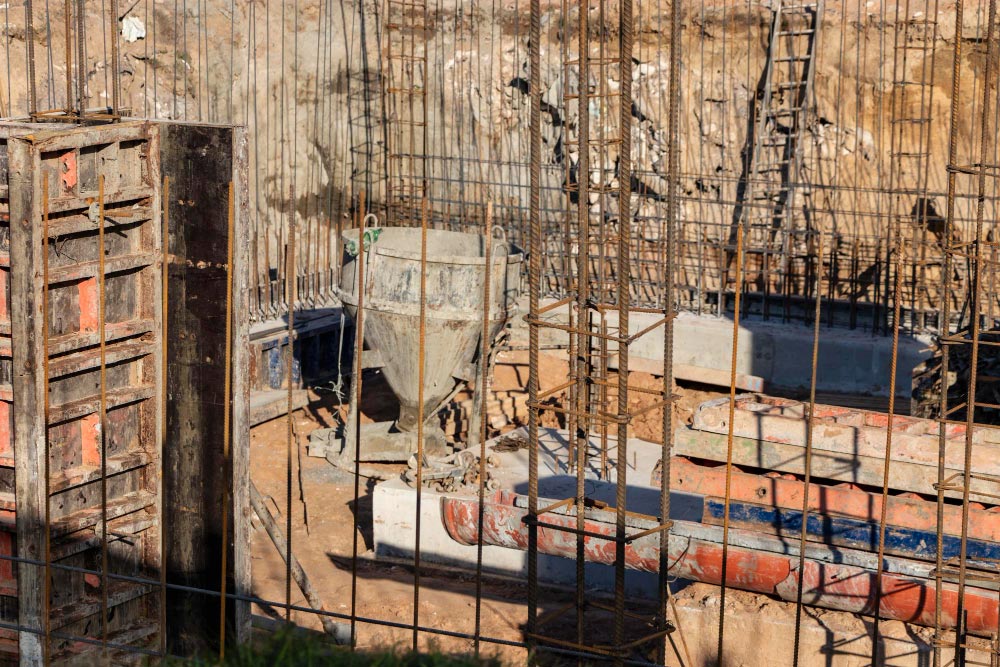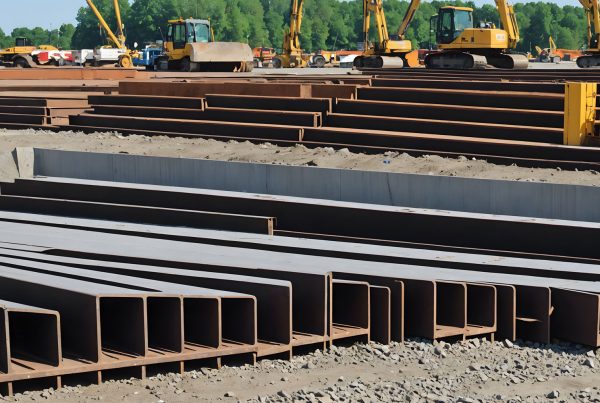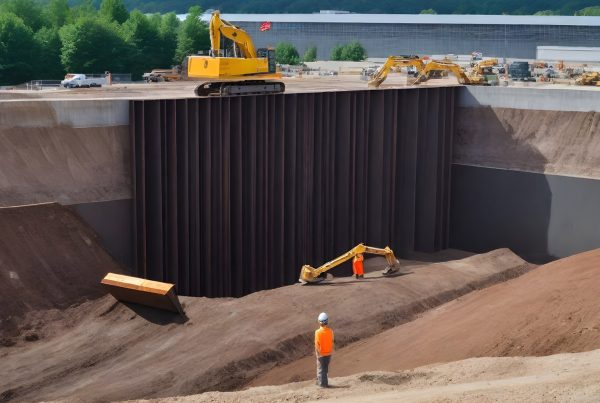Retaining walls play a critical role in construction projects, providing stability and preventing soil erosion in challenging environments. Among the various systems available, sheet piles have emerged as a popular choice due to their versatility and ease of installation. However, other retaining wall systems, such as secant pile walls, contiguous pile walls, and soil nail walls, also offer unique advantages depending on project requirements. In regions like Congo, where diverse geotechnical and environmental conditions exist, selecting the right retaining wall system is crucial. This article provides a comparative analysis of steel sheet piles and other retaining wall systems, highlighting their applications, advantages, and limitations.
1. What Are Sheet Piles?
Sheet piles are long, interlocking steel sections driven into the ground to form a continuous wall. They are primarily used for temporary and permanent earth retention, excavation support, and flood protection. Sheet piles are particularly advantageous for projects requiring quick installation and minimal excavation.
Advantages of Sheet Piles:
- Cost-Effective: Sheet piles are generally more affordable than other retaining systems, especially for temporary works.
- Ease of Installation: Can be quickly installed using vibratory hammers or presses.
- Reusable: Steel sheet piles can be removed and reused, reducing overall material costs.
2. Other Retaining Wall Systems
While sheet piles are widely used, other retaining wall systems offer specific benefits for different project conditions:
2.1 Secant Pile Walls
Secant pile walls are constructed by overlapping reinforced and unreinforced concrete piles. They provide excellent water resistance and are ideal for deep excavations and areas with high groundwater levels.
2.2 Contiguous Pile Walls
Contiguous pile walls consist of a series of closely spaced piles that form a barrier. They are suitable for urban environments with space constraints but may require additional waterproofing measures.
2.3 Soil Nail Walls
Soil nail walls stabilize slopes by reinforcing the soil with steel bars and applying a concrete facing. These walls are cost-effective for steep slopes and hilly terrains but may not be suitable for high water table areas.
3. Key Comparisons
3.1 Installation Speed
Sheet piles have a significant advantage in terms of installation speed, making them ideal for emergency applications or fast-paced projects. Other systems, such as secant or contiguous pile walls, require more time due to the need for drilling and concrete curing.
3.2 Structural Strength
Secant pile walls and contiguous pile walls offer higher structural strength and are better suited for supporting heavy loads and deep excavations. Sheet piles are sufficient for lighter loads and temporary works.
3.3 Cost Considerations
Sheet piles are typically more cost-effective for temporary works, while secant pile walls and soil nail walls may offer better value for long-term projects requiring greater stability.
3.4 Environmental Impact
Sheet piles are less intrusive and generate minimal waste during installation, making them a more environmentally friendly option for projects in ecologically sensitive areas, such as wetlands in Congo. Secant pile walls and contiguous pile walls, on the other hand, involve extensive drilling and material usage, which can have a larger environmental footprint.
4. Applications in Congo
In Congo, the choice of retaining wall system depends on the specific project requirements and site conditions. For example, sheet piles are often used for temporary flood protection and excavation support in urban areas. In contrast, secant pile walls may be preferred for deep foundation projects where groundwater control is critical. Soil nail walls are commonly employed for stabilizing slopes in rural or hilly regions, where cost-effectiveness is a priority.
Conclusion
The selection of a retaining wall system depends on factors such as project size, budget, environmental considerations, and geotechnical conditions. Sheet piles offer speed, affordability, and reusability, making them an excellent choice for many projects. However, other systems like secant pile walls, contiguous pile walls, and soil nail walls provide enhanced strength and adaptability for specific needs. In Congo, where infrastructure development spans diverse terrains and challenges, understanding these differences is essential for achieving optimal project outcomes. By evaluating project requirements and environmental factors, construction professionals can choose the most suitable retaining wall system to ensure success and sustainability.






